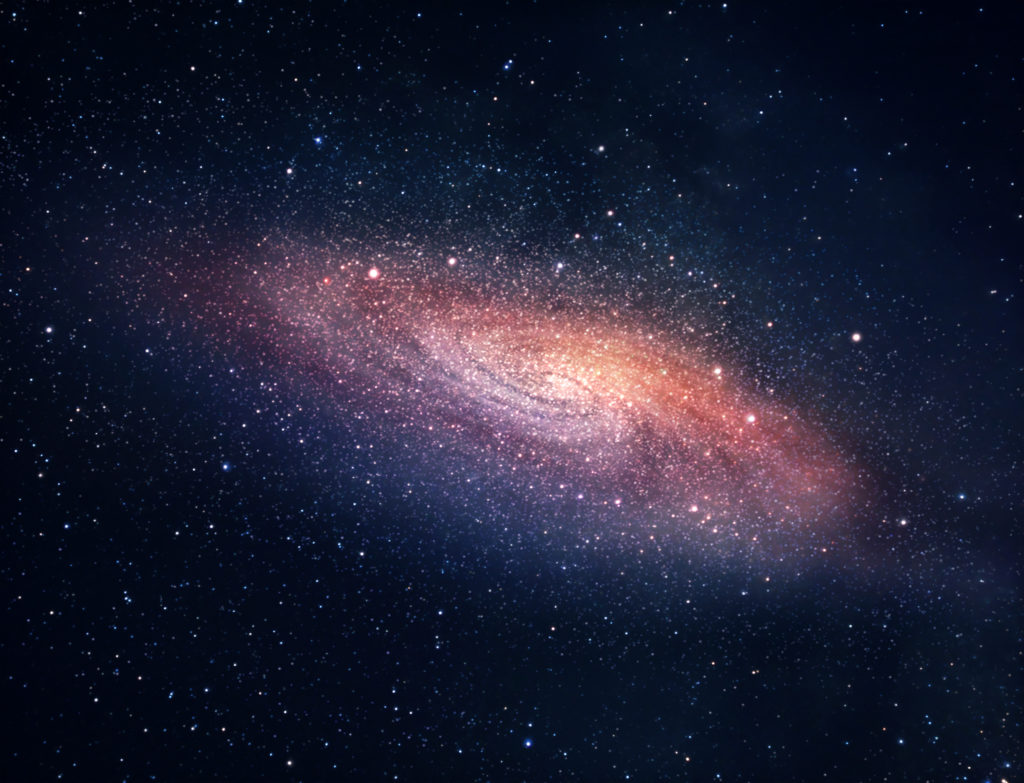*** Note: This is (in our view) the best evidential argument. But, evidential arguments are best used in support of a presuppositional argument. In other words – once the unregenerate worldview is shown to be absurd and incapable of even joining the discussion, then evidential arguments can be deployed to further demonstrate the glory of God.
Dr. William Lane Craig is a Christian apologist who revitalized a thousand-year-old argument supporting the existence of a Creator – the Kalam Argument.
His summary of this discussion is here: https://www.reasonablefaith.org/writings/popular-writings/existence-nature-of-god/the-kalam-cosmological-argument/.
It’s well worth a thorough read as it explores the nuances of this argument.
The argument as originated by Al-Ghazali goes as follows:
- Whatever begins to exist has a cause of its beginning.
- The universe began to exist.
- Therefore, the universe has a cause of its beginning.
Craig reframes point one to be less strong in order to avoid arguments about subatomic particles resulting from quantum decay processes:
1′. If the universe began to exist, then the universe has a cause of its beginning.
This is a nice generalization but gets caught in a similar trap regarding the actual beginning event of the universe. Craig relies on the current scientific consensus view regarding origins and thus seems to reject a historical-grammatical hermeneutic when reading Genesis.
This is not at issue here – but rejecting that approach to origins raises difficult questions when you wish to appeal to Scripture as the ultimate authority in other matters – such as issues regarding ethics and morality. If the inerrancy and authority of Scripture is to be rejected at one point, why must it be accepted in another?
Therefore, if possible the Kalam argument should be generalized in order to avoid this issue. Fortunately, this is quite possible and the generalized argument is also much stronger.
Generalized Kalam Argument
The universe itself is not the fundamental issue that should be considered – but rather the structure that bounds and informs it. This structure is the natural law that governs all matter and energy, which is most deeply studied in the scientific discipline of physics.
The “shape” of a volume of water is determined by its container. In the same way, the evolution of the universe in spacetime is determined by natural law. This law is elusive and in some ways may be impenetrable due to our human limitations. Thus it is important to distinguish it from our “knowledge.”
Physics represents our best current models – built with mathematics and constrained by experiments – but those models are simply representations of the actual natural law that governs. For much of history, the Aristotelian explanation of gravity was the dominant view. Newton understood and corrected the flaws of this approach and wrote a very accurate formulation of gravity that is still correct for almost all situations we experience. Einstein recognized and solved the issues that arise at extreme speeds and mass/energy densities – much more common in the universe than what we experience – and revolutionized our fundamental understanding of the universe. He was also key in developing quantum theory, which was an even more radical upheaval, this time at extremely small scales.
Relativity and quantum theories remain in tension today and are fundamentally incompatible. String theory is the only current viable candidate for uniting them and it introduces concepts that are even more mind-boggling than quantum theory. It also evades experimental testing with our current technology and so remains just a very promising candidate.
The point here is this: our models evolve with time as our understanding and technological capability grows. What has not changed is the actual natural law we strive to understand. When we talk about “the universe” and discuss concepts such as “the big bang” we must be careful to distinguish our models from what is actually true and recognize the gap between what we think we know and what is.
One may wish to claim that our models now represent a highly accurate picture of natural law and can be used as a solid basis for making cosmological claims. This is a very difficult view to defend. We cannot even predict the weather, or the turbulent flow of smoke. But we clearly understand the origins of the universe? We most likely do not. The current model may be very close – but it may also be as wrong as Aristotle’s view turned out to be. The incredible vastness and complexity of the universe should inspire caution and humility.
Thus it is not sound to make a cosmological argument from our models, and the Kalam Argument should be recast in terms of the natural law. This can be done as follows:
- Whatever begins to exist has a cause of its beginning.
- Natural law began to exist.
- Therefore, natural law has a cause of its beginning.
This generalized argument does not change anything material to the previous arguments – thus the defense of those arguments remains and very thorough treatments may be found elsewhere.
Note that it sweeps away the typical technical objections to an argument based on the origins of the universe. Whatever form the universe takes – be it a big-bang initiated inflationary model, a big-bang initiated by a previous collapse, a many universes theory, a “local order zone” in a much vaster heat death scenario, etc – the natural law underpinning it remains.
This allows us to avoid the sideshows and instead deal with the main event: that there is natural law and it must have had a cause. One who wishes to reject this is left to wrestle with what must be a very uncomfortable choice: admit that natural law must have had a singular and greater cause, or hold to the absurdity of infinite regress or, even worse, self-cause.
Dr. Craig explains well what properties that cause must have: a “beginningless, uncaused, timeless, spaceless, changeless, immaterial, enormously powerful, Personal Creator of the universe.”
Finally, note also that the generalized Kalam argument does not require adherence to Young or Old Earth Creationism or any other explanatory framework. Thus one can retain a presuppositional approach to apologetics and not sacrifice it for the sake of a powerful argument.

